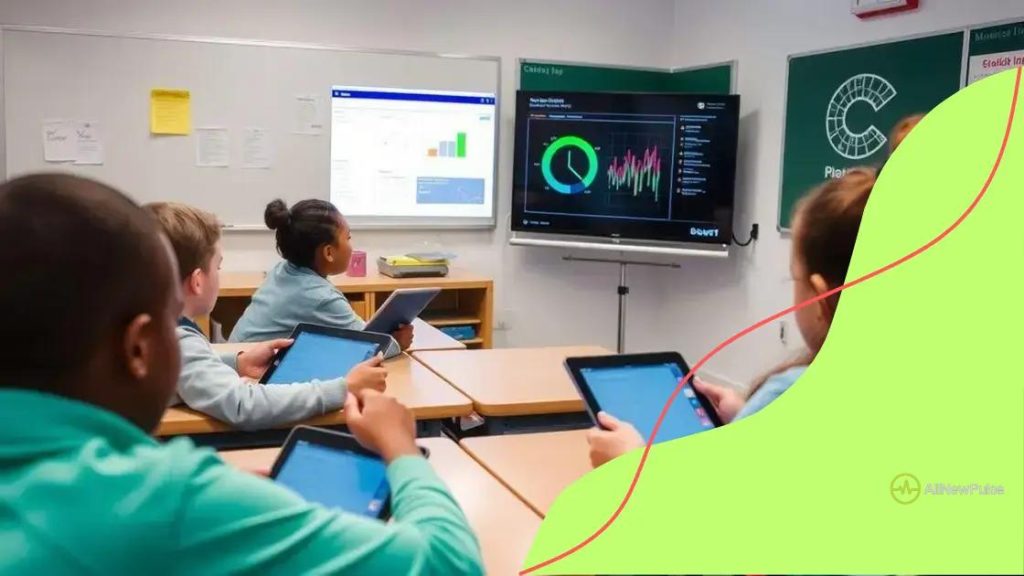The role of data analytics in improving educational outcomes

The role of data analytics in improving educational outcomes is crucial as it enables personalized learning, enhances student performance, and helps educators make informed decisions based on real-time data insights.
The role of data analytics in improving educational outcomes is becoming increasingly important as schools seek to enhance student learning. Have you ever wondered how data can transform the way we teach and learn? Let’s dive into this topic!
Understanding data analytics in education
Understanding data analytics in education is essential for modern learning environments. Schools and universities are increasingly utilizing data to make informed decisions that enhance student success. This approach helps educators track progress and tailor instruction to meet individual needs.
The Basics of Data Analytics
Data analytics involves collecting and analyzing data to draw insights. In education, this can include student test scores, attendance records, and engagement metrics. By interpreting this data, educators can identify trends and patterns, ultimately improving teaching effectiveness.
Key Benefits
- Personalized Learning: Data analytics allows teachers to customize learning experiences based on each student’s strengths and weaknesses.
- Early Intervention: By monitoring performance data, educators can spot at-risk students early and provide necessary support.
- Informed Decision-Making: Educational institutions can use data to allocate resources effectively, ensuring that funding and efforts are directed where they are most needed.
Moreover, data analytics promotes a culture of accountability in schools. When teachers and administrators rely on data to measure success, it fosters transparency and encourages continuous improvement. It is no surprise that schools employing rigorous data analysis show higher achievement levels.
As we advance, the use of data analytics in education will continue to evolve. Schools are leveraging advanced technologies like artificial intelligence and machine learning to gain even deeper insights. These innovations not only enhance current educational practices but also pave the way for future developments.
In light of these changes, understanding data analytics becomes crucial for educators and policymakers. Those who embrace this data-driven approach will be better equipped to address challenges and elevate educational outcomes for all students.
Impact of data analytics on student performance
The impact of data analytics on student performance is significant and transformative. By analyzing data collected from various sources, educators can gain insights into how students learn and where improvements can be made. This allows them to enhance educational outcomes effectively.
How Data Analytics Influences Performance
Data analytics provides actionable insights that can directly influence student success. Educators use data to pinpoint exactly which areas students struggle with and can adjust their teaching methods accordingly. This responsiveness leads to better engagement and understanding among students.
Key Benefits
- Targeted Interventions: With data analytics, teachers can identify students who need extra help and create personalized support plans.
- Performance Trends: Tracking student performance over time allows educators to see trends that inform curriculum adjustments.
- Predictive Analytics: By using historical data, schools can predict future performance and implement strategies to support at-risk students before issues arise.
Additionally, data analytics enhances communication between teachers, parents, and students. When everyone has access to performance data, it fosters collaboration. This shared understanding is crucial for motivating and supporting students in their educational journey.
Moreover, schools that leverage data analytics often report increased overall performance among students. These institutions utilize data to assess the effectiveness of their programs and teaching methods. Such assessments lead to continuous improvement in educational practices.
As educators increasingly recognize the value of data, they explore innovative ways to incorporate analytics into their teaching. This paradigm shift emphasizes the importance of data in not only assessing performance but also driving student achievement.
Using data to tailor learning experiences

Using data to tailor learning experiences has become a vital strategy in education. By analyzing student data, teachers can understand individual learning styles and preferences. This understanding allows educators to create personalized learning experiences that engage students effectively.
Benefits of Personalized Learning
When educators customize learning based on data, the benefits are substantial. Students who receive tailored instruction are more likely to stay engaged and motivated to learn. This personal approach caters to their unique needs and helps identify areas where they may struggle.
How Data Analytics Helps
- Identifying Learning Styles: Data can reveal how each student learns best, whether through visuals, hands-on activities, or lectures.
- Adapting Curriculum: Teachers can adjust the curriculum based on data insights, making lessons more relevant to students.
- Monitoring Progress: Continuous data analysis allows for real-time feedback, enabling teachers to adapt instruction quickly.
Additionally, leveraging data creates a more supportive environment for students. When teachers know how to tailor lessons, students feel valued and understood. This boosts their confidence and encourages them to take an active role in their learning journey.
Furthermore, as educational technology evolves, more tools are emerging that facilitate the use of data in tailoring learning experiences. Learning management systems (LMS) and educational software now provide analytics that help in tracking student progress and engagement.
Through the effective use of data analytics, educators can transform traditional teaching into more dynamic and inclusive learning experiences. The focus shifts from one-size-fits-all approaches to methods that recognize and celebrate individual student strengths.
Challenges in implementing data analytics in schools
Challenges in implementing data analytics in schools can hinder the progress of educational institutions. Despite the benefits of using data, many schools face obstacles that prevent effective implementation. Understanding these challenges is crucial for developing strategies to overcome them.
Common Obstacles
One major challenge is the lack of training for educators. Many teachers may not feel comfortable using data analytics tools because they lack the necessary skills and knowledge. This gap can lead to underutilization of valuable resources that could enhance student learning.
Infrastructure and Resources
- Insufficient Technology: Many schools struggle with outdated technology that cannot support advanced data analytics tools.
- Budget Constraints: Limited funding often prevents schools from investing in the necessary technology and training programs.
- Data Privacy Concerns: Schools must navigate regulations concerning student data privacy, which can complicate data collection efforts.
Additionally, there is often a cultural resistance to change. Some educators may prefer traditional teaching methods and view data analytics as a threat to their teaching style. Overcoming this mindset is essential for successful implementation.
Moreover, the process of collecting and analyzing data can take time, which may be seen as an extra burden for teachers already managing heavy workloads. This perception can discourage educators from engaging with data analytics.
Addressing these challenges requires a comprehensive approach that includes better training programs, investment in technology, and fostering a school culture that embraces data-driven decision-making. By tackling these obstacles, schools can unlock the full potential of data analytics and improve educational outcomes for students.
Future trends in educational data analytics
Future trends in educational data analytics show promise for enhancing learning experiences and outcomes. As technology continues to evolve, the ways in which data is used in education will also change, leading to more effective teaching methods.
Emerging Technologies
One major trend is the integration of artificial intelligence (AI) and machine learning in educational data analytics. These technologies can analyze vast amounts of data quickly, helping educators identify patterns and predict student performance more accurately. This allows for timely interventions that support student success.
Personalized Learning Experiences
- Adaptive Learning Platforms: These tools adjust the curriculum based on real-time data, ensuring students learn at their own pace.
- Enhanced Assessment Tools: Future assessments will likely focus more on understanding individual student needs, rather than standard testing.
- Real-Time Feedback: Educators will be able to provide immediate feedback based on data, which can help improve learning outcomes.
Furthermore, data visualization techniques are set to become more sophisticated. Teachers will be able to see complex data in easy-to-understand formats, improving their ability to interpret student data. This could enhance their overall approach to teaching by making insights clearer and more actionable.
Another important trend is the emphasis on data privacy and ethical considerations. As schools increasingly rely on data, ensuring the protection of student information will be paramount. Institutions will need to implement strong guidelines and practices to maintain trust while utilizing analytics.
Moreover, collaboration among educational institutions will likely increase. Schools will share data insights and best practices, creating a community focused on improving student outcomes through shared knowledge. This collaboration can lead to broader changes across the education landscape.
FAQ – Frequently Asked Questions about the Role of Data Analytics in Education
How can data analytics improve student performance?
Data analytics allows teachers to identify strengths and weaknesses in student learning, leading to targeted interventions and personalized support.
What are the main challenges in implementing data analytics in schools?
Challenges include lack of training for educators, insufficient technology, budget constraints, and data privacy concerns.
What future trends should we expect in educational data analytics?
Emerging trends include the use of AI for real-time data analysis, personalized learning experiences, and enhanced data visualization tools.
How does personalized learning benefit students?
Personalized learning caters to individual student needs, making education more engaging and effective by allowing students to learn at their own pace.





